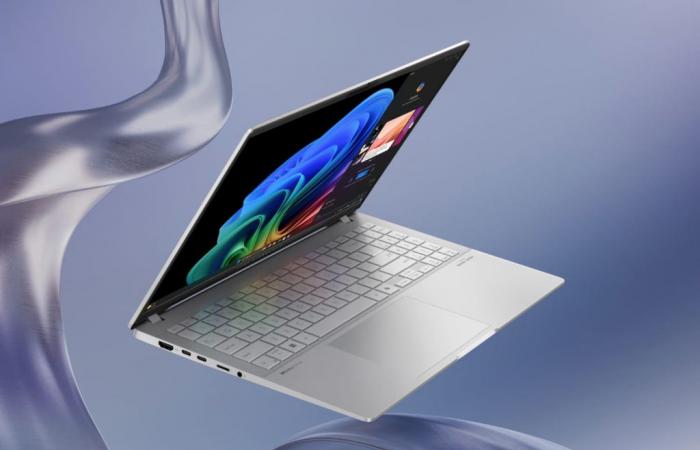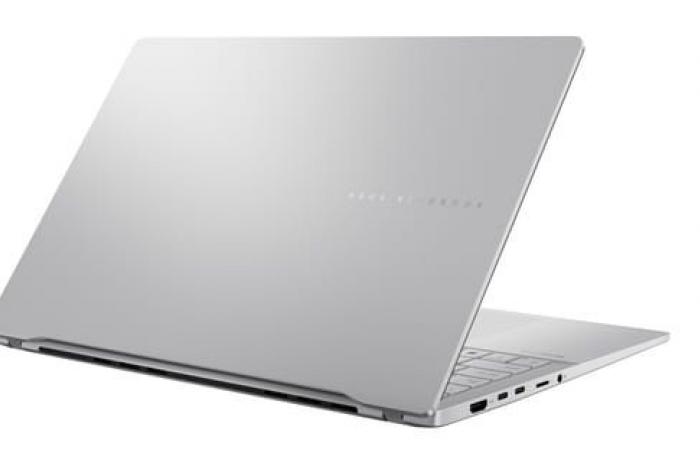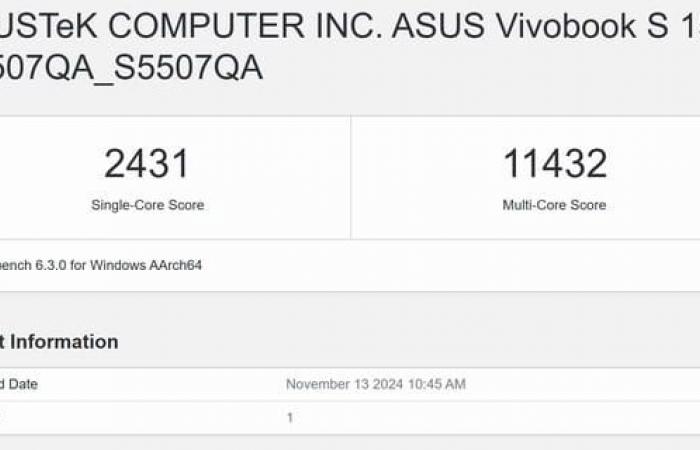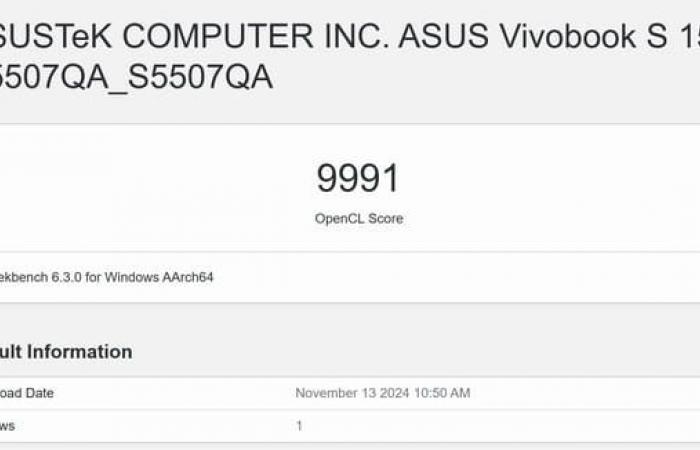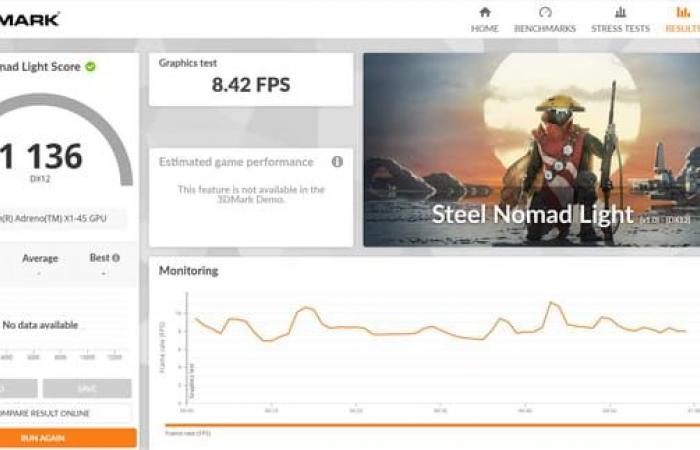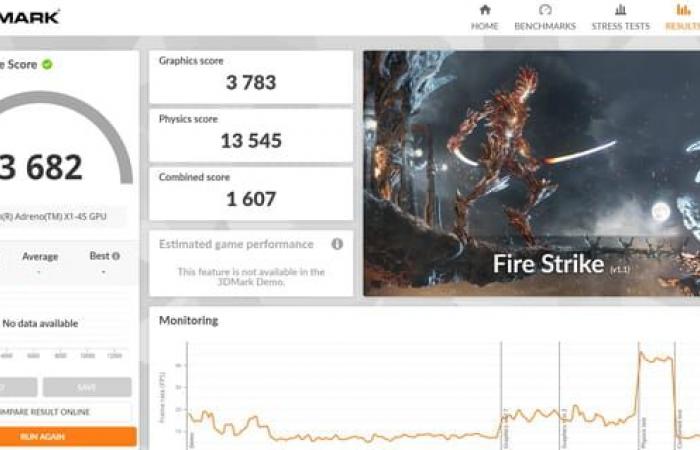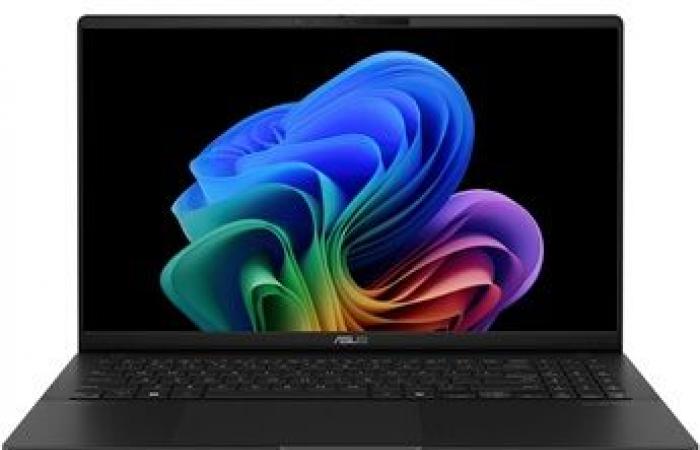Asus offers its Vivobook S15 in a version powered by the most accessible Qualcomm processor, the Snapdragon X Plus. A cheaper Copilot+ PC, but also less efficient.
Qualcomm is determined to make life difficult for the big names in the PC market, AMD and Intel. With its Snapdragon chips and their ARM architecture (like Apple’s M processors), the American founder intends to weigh in on the Windows PC market. After the first Snapdragon X Elite version released last spring, Qualcomm took advantage of the IFA show in Berlin last summer to present its X Plus version.
As its name does not indicate, this processor does not perform better than its predecessor but rather a bit worse. And for good reason. While the Snapdragon X Elite has 12 cores with a maximum clock rate set at 3.8 GHz, its little brother Another difference, the Adreno GPU goes from 4.6 TFLOPS to 1.7 TFLOPS in the worst case (the X Plus is available in 4 versions). On the other hand, Qualcomm has assured, the computing power for processing operations linked to artificial intelligence does not vary between the two ranges of processors and remains fixed at 45 TOPS. Enough to keep the Copilot+ PC label on laptops that adopt this new chip and easily experiment with AI tools.
|
|
Asus Vivobook S15: a less ambitious PC but also less expensive
The objective behind this new processor: to deliver cheaper Copilot+ PCs. And it seems to work. Asus is among the first manufacturers to release the new Qualcomm chip. The Taiwanese has thus integrated it into the chassis of his Vivobook S15 priced just under 1000 euros. For the model we are testing here (S5507QA), it is the most affordable version of the SoC, namely the Snapdragon 3.4 GHz single-core. The SoC also makes do with 30 MB of cache memory and an Adreno GPU displaying 1.7 TFLOPS.
We will not return here to the intrinsic qualities of this Asus laptop for a simple reason: it is exactly the same chassis that we tested last June (read our test). A laptop PC with a beautiful 15-inch Oled screen with 3K definition, equipped with 16 GB of RAM and 512 GB of storage space and powered by a 70 Wh battery. Only the engine changes. The previous Vivobook (still in the Asus catalog) was powered by a Snapdragon X Elite processor (X1E-78-100). As for the price, it is 400 euros more or 1499 euros for this model with Snapdragon X Elite chip. So, is going from 12 cores to only 8 and benefiting from half the GPU power so handicapping if the bill becomes lighter? This is what we wanted to check.
Asus Vivobook S15: who takes the Plus, does the less
Technical sheet
| Model | Asus Vivobook S15 S5507QA |
| Screen size | 15.6 inches |
| Screen technology | Oled |
| Screen definition | 2880 x 1620 pixels |
| Processor | Qualcomm Snapdragon X Plus (X1P-42-100) |
| Graphics processor | Adreno XI-45 |
| RAM | 16 GB (soldered) |
| Storage | SSD 512 Go |
| Connections | 2x Thunderbolt 4 (USB-C) 2x USB-A 3.2, 1x HDMI 2.1, 1x Jack 3,5 mm, 1x Micro SD |
| Wifi / Bluetooth | 7 / 5.4 |
| Battery | 70 Wh |
| System | Windows 11 Home |
| Accessories provided | 65W charger |
| Dimensions | 35,26 x 22,69 x 1,47 cm |
| Weight | 1,4 kg |
We reproduced exactly the same benchmarks as for the Vivobook S15 under Snapdragon X Elite. Note, however, that the latter was then equipped with 32 GB of RAM compared to 16 GB of RAM for this new Vivobook S15 under Snapdragon X Plus.
As we can see with the Cinebench test, the single-core results remain quite similar with only a few points difference. On the other hand, in multi-core, the difference is felt with almost 300 points of difference between the two configurations.
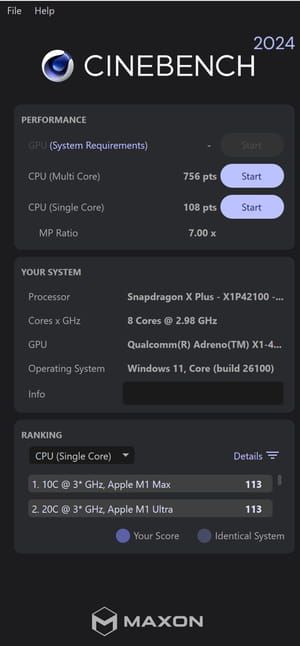
An observation confirmed with the Geekbench results where the multi-core process remains below what the X Elite offers. Logical with a processor cut from 4 cores whose frequency is lowered by 200 MHz and with 12 MB less cache memory. Concretely, this means that you will not be able to ask as much from this Vivobook S15. It will be less efficient (and therefore less fast) with demanding tasks such as video editing. On the other hand, nothing to fear for everyday life. Office work like streaming entertainment is of course within its reach. No worries there. We also appreciate the silence in operation and even when the fans start up during an increase in activity, they do not twist the eardrums. A real treat.
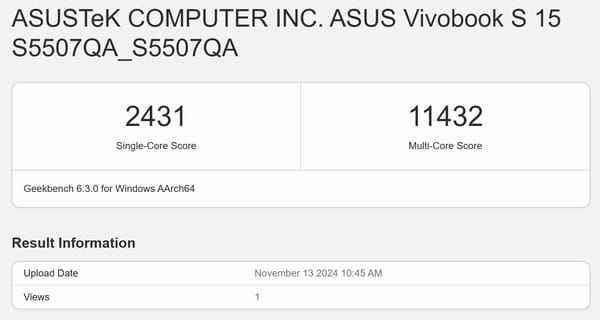
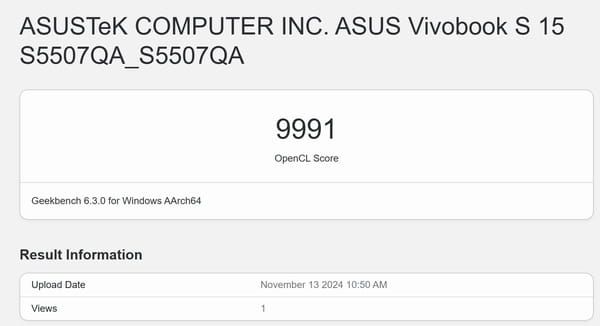
With this Vivobook, the qualities and defects encountered with its predecessor, however, remain identical. The PC is responsive in handling Windows and the various utilities that we have launched. However, we see that the display bugs that we encountered at the time have disappeared. Microsoft has obviously reworked its copy of Windows for ARM architecture. On the other hand, Prism, which normally allows you to run X86 applications not designed for the ARM architecture, is still not ready. Many of our benchmarks failed to run due to compatibility issues.
On the GPU side, the graphics are even less impressive than on the previous Vivobook. They were already not glorious but with the Snapdragon X Plus, it’s worse. The results with 3DMark bear this out: the X Plus is less good with 3D management. If you are a gamer, this Vivobook S15 is not for you.
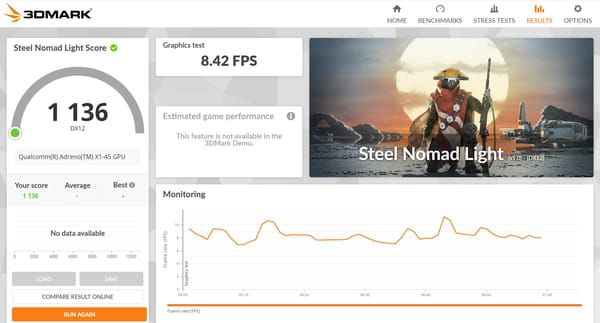
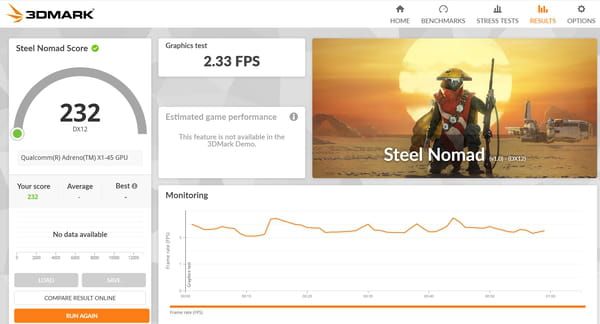
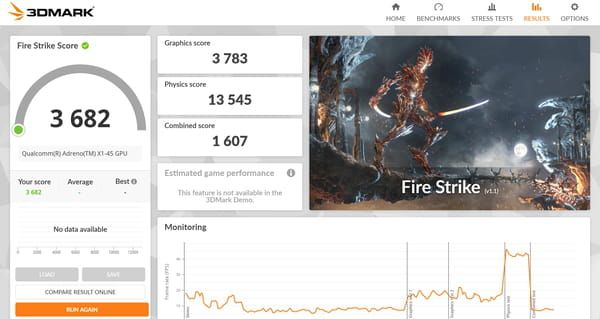
Asus Vivobook S15: a barely perceptible gain in autonomy
With four fewer cores and slightly lower frequencies, one would think that the Snapdragon X Plus would consume less energy to increase the overall autonomy of the PC. Remember here that it is equipped with the same 70 Wh battery as the other Vivobook under Snapdragon X Elite. This is indeed the case but in fairly small proportions. With our video playback test, the PC lasted 17 hours 30 hours, 30 minutes more than its predecessor. We are far from the approximately 20 hours of autonomy achieved by the very recent PCs powered by Intel’s Lunar Lake processors and really capable of competing on this point with Apple’s MacBooks (read our article).
As for recharging, it doesn’t seem any faster either. After 30 minutes of charging with the 65 W charger provided, we recovered 39% battery, 73% after an hour and finally 100% after 1h35.
Asus Vivobook S15: a Copilot+ PC for less than €1000 good for the service?
With this Vivobook S15 powered by Qualcomm’s Snapdragon X Plus chip, Asus is entering the dance of more affordable Copilot+ branded laptops. Machines which until now were billed well beyond this psychological price for a fairly limited interest – if we are satisfied with the functions of Microsoft’s Copilot. But for anyone who wants to start experimenting with AI with all the other tools available on the market, this Vivobook can represent a great entry point. If the raw performance of Qualcomm’s chip does not allow it to appear at the top of the basket, the chip designer has taken care not to touch the NPU (neural processor) which deploys the same power as its more expensive X processor. This Vivobook nonetheless remains a very good PC for all other daily work. The care taken by Asus in its design with a beautiful Oled screen, rich connectivity and real comfort of use, places it in the category of computers that are both versatile and pleasant to live with.

